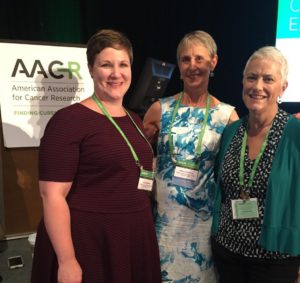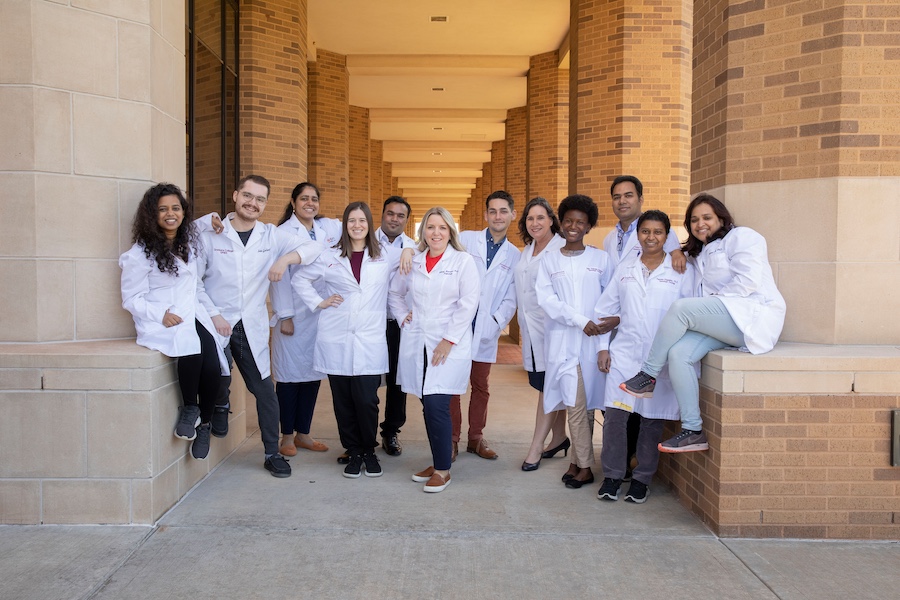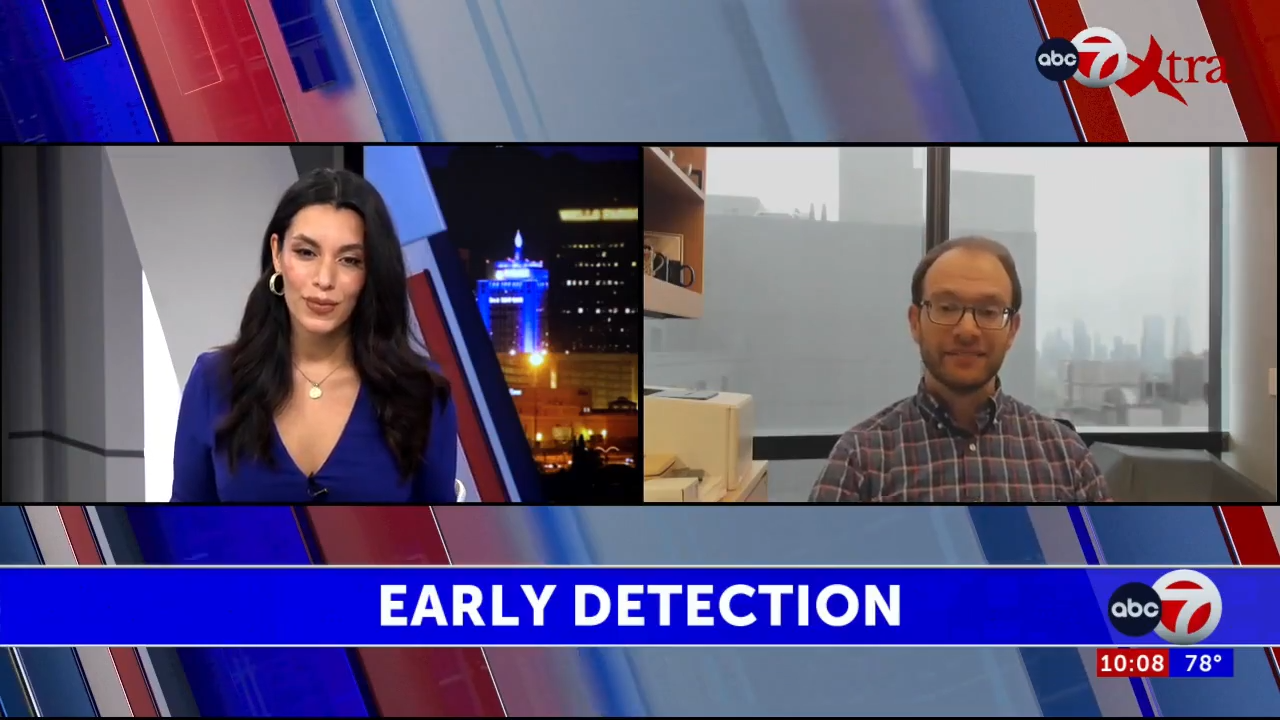 Earlier this month, we attended the AACR conference Advances in Ovarian Cancer Research: Exploiting Vulnerabilities, which highlighted many recent pre-clinical advancements in the treatment of ovarian cancer. Much of the work presented was hot off the presses and unpublished – so we were asked not to share too many details from the work publicly. To respect the meeting organizers’ wishes, we will only generally summarize some of the advances discussed below.
Earlier this month, we attended the AACR conference Advances in Ovarian Cancer Research: Exploiting Vulnerabilities, which highlighted many recent pre-clinical advancements in the treatment of ovarian cancer. Much of the work presented was hot off the presses and unpublished – so we were asked not to share too many details from the work publicly. To respect the meeting organizers’ wishes, we will only generally summarize some of the advances discussed below.
Several key areas of work were discussed throughout the conference: (1) ovarian cancer screening (2) targeting DNA repair pathways as a way to treat ovarian cancer; (3) immunotherapy; and (4) advances in the treatment of rare tumor types. Finally, the conference also featured a panel discussion with patient advocates – including OCNA’s Board President, Diane Rader O’Connor, and STS Presenter, Carla Jimenez.
Ovarian Cancer Screening
Keynote speaker Dr. Usha Menon described her nearly two decades of work on the United Kingdom Collaborative Trial of Ovarian Cancer Screening (UKCTOCS), which is expected to be complete later this year. In short, the UKCTOCS study examines whether women with an average risk of ovarian cancer will benefit from having annual CA-125 tests. In the trial, women had an annual CA-125 and then looked year after year at the change in CA-125 number, in combination with a risk algorithm called ROCA. Preliminary results have suggested that this approach may be useful in catching ovarian cancer in an earlier stage (2 or 3, vs. 3 or 4), but it is not yet known if this actually equates with women living longer lives. The full results of the trial will be available on December 17, 2015, so stay tuned!
Exploiting the DNA Repair Pathway in the Treatment of Ovarian Cancer
Many ovarian cancer tumors result from problems with a cell’s ability to repair damage to its DNA – the genetic blueprint. As such, these cells accumulate a lot of mutations which allow them to grow and divide rapidly, resulting in cancer. However, the strength of these cells may also be their greatest weakness – in recent years, researchers have been learning how to exploit the ovarian cancer cell’s DNA repair problems to target and kill them.
The first such advancement in this area was the development of PARP inhibitors, a new class of drug for ovarian cancer, which exploits a cell’s ability to repair its DNA. Recently, some researchers have speculated that combining PARP inhibitors with other drugs that also exploit this vulnerability might have synergistic effects and be an even better therapy for ovarian cancer. At the meeting, researchers presented work examining many other targets that could be used with PARP inhibitors, including CDK, PI3K, ATR, Chk1, and USP11. If they work, these combinations of drugs could be expand the use of PARP inhibitors beyond women with BRCA mutations. Suffice to say, it’s an exciting time with lots of potential.
Immunotherapy
Researchers also spent quite a bit of time discussing novel ideas in immunotherapy for ovarian cancer. As you may know, immunotherapy works by harnessing an individual’s innate immune system in the fight against tumor cells. There are two major types of immunotherapy – those which use drugs to help activate the immune system, and those which use super versions of a person’s own immune system cells to fight off cancer. Much of the presentation at this meeting focused on the latter. Although there have been a few trials using innate immunotherapy in the treatment of ovarian cancer, the field is still in a relatively early stage. Many of the researchers at the conference presented preliminary research that will lay the groundwork for future trials in ovarian cancer, including investigating how to pick which patients might benefit the most from immunotherapy and new types of therapy.
Rare cancers
The AACR conference was notable in that it also included research on the rarer types of ovarian cancer, such as clear cell, endometrioid, germ cell, small cell carcinoma of the ovary hypercalcemic type (SCCOHT), and mucinous. Nearly all the research presented was pre-clinical, but much was promising for the eventual development of therapies in these areas.
- Clear Cell: A number of studies were reported that follow-up on last year’s identification of the gene ARID1A as being mutated in 50% of clear cell carcinomas. Subsequent research has found that clear cell carcinomas with ARID1A mutations may be sensitive to a class of drugs that inhibit the protein EZH2, which regulates the growth of cells. There are several drugs for EZH2 that could be used in future clinical trials, yet more work remains to be done to validate these findings.
- Endometriod: Perhaps surprisingly, many researchers have found a number of similarities between clear cell and endometroid cancers, in some cases even finding both tumor type in the same patient. This suggests that these types of cancers might result from similar factors, such as endometriosis. It is not yet known if women that have both of these tumor types had their cancers develop once or independently from each other.
- Germ cell tumors: Researchers are learning that germ cell tumors are far more rare than previously thought, hinting that many women may have been misdiagnosed with germ cell tumors and perhaps given inappropriate treatments. This highlights the need for better diagnostic tests for germ cell tumors to ensure that women receive the correct treatment right away.
- SCCOHT: Researchers have recently learned that most young women with SCCOHT have a mutation in the gene BRG1 in their tumors. Researchers presented data at the meeting that identified a class of drugs that might be effective in treating them, but much more research is needed to verify this. Incidentally, SCCOHT still puzzles researchers as they aren’t sure how it develops.
- Mucinous: Researchers are just starting to unravel the origins of mucinous ovarian cancer tumors, which are very rare. If they are able to find out which types of alterations are driving these tumors, they might be able to make progress in their treatment. So far, they have a few hints that mucinous tumors may be more similar to gastric tumors, than they are to other ovarian cancer tumors.
Sharing the Patient Experience
Finally, the conference also featured a panel discussion with patient advocates – including OCNA’s Board President, Diane Rader O’Connor, and STS Presenter, Carla Jimenez. It’s worth noting that the audience consisted heavily of bench scientists who likely do not interact with patients on a routine basis. Of the 320+ people in attendance, 50% were PhD level scientists, 20% were physicians, 25% were trainees who don’t yet have advanced degrees – and a scant few 5% for advocates and survivors.
In a widely attended and popular session, Diane and Carla discussed their experiences with ovarian cancer, including how they chose their doctors, therapies, and whether or not to participate in a clinical trial. The conversations didn’t end at the end of the session, though – Diane and Carla stayed on hand to answer questions from eager researchers, highlighting the importance of open dialog between survivors and scientists.


